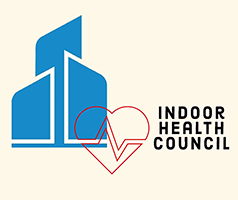Measuring Dust on Surfaces: A Simple Reproducible Method
By Robert. W. Powitz, Forensic Sanitarian
In my practice as a forensic sanitarian, measuring surface dust with a simple technique helps assess the need for better cleaning.
We press a short piece of cellophane tape to the surface and then mount the sticky side on a glass slide (or another strip of tape if a slide isn’t available), then count the visible dust, dander, hair, etc. using a 10x magnifier (e.g., a $10 linen tester).
Since the magnifier has a 1/2″ x 1/2″ field for the count, it’s easily reproducible. I try to find the cleanest and the dustiest place (strictly subjective) for my initial samples to give me limits to a gradient to find varying levels of dust, and what it means.
For simplicity, I set either a two-, three- or four-point gradient and then set about taking random samples. I found that the gradient follows air and people movement patterns, and it gives me some idea as to the efficiency of the air cleaning capability of the ventilation system. I can also verify where most of the dust is generated or where it’s coming from.
I don’t so much look at it as a measurement of the effectiveness of cleaning, rather I use it to demonstrate where extra cleaning efforts should be directed. I found this to be an assist in developing an acceptable labor and time saving cleaning strategy.
Questions? Please ask.
Forensic sanitarian Robert W. Powitz, Ph.D., MPH, RS, CFSP, is principal consultant and technical director of Old Saybrook, CT-based R.W. Powitz & Associates, a professional corporation of forensic sanitarians who specialize in environmental and public health litigation support services to law firms, insurance companies, governmental agencies and industry. Among his honors, Powitz was the recipient of the NSF/NEHA Walter F. Snyder Award for achievement in attaining environmental quality, and the AAS Davis Calvin Wagner Award for excellence as a sanitarian and advancing public health practice. He is the first to hold the title of Diplomate Laureate in the American Academy of Sanitarians.
Editor’s Note:
The report, A Simple Method for the Measurement of Dust on Surfaces and the Effectiveness of Cleaning, by the Institute of Cleaning Technology, Denmark, was the inspiration for this method. Download the study report.




